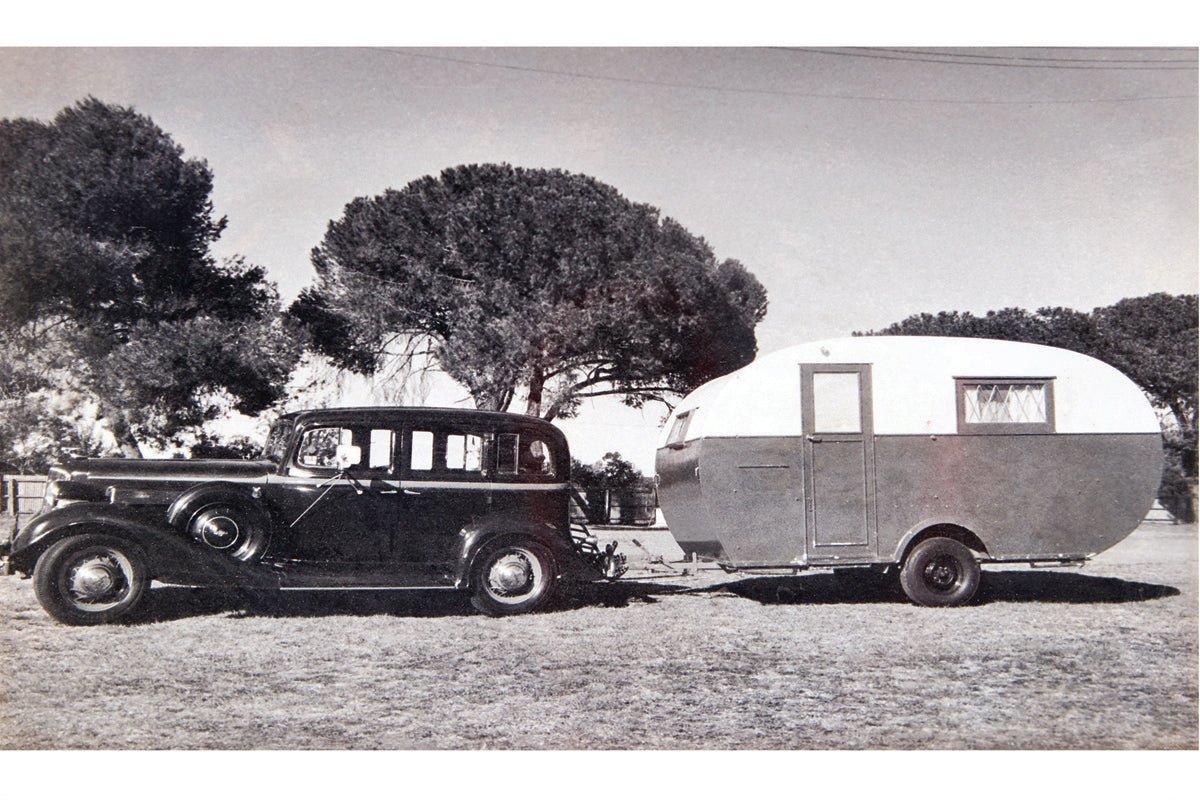All Roads Lead to Roma

Important work takes time — and that’s why Roma Caravans wasn’t built in a day. Its genesis harks back to 1928 under the ownership of caravan-building pioneers Bob and Roma Brown.
But there was a paradigm shift three decades later for this proud company when the late Vittorio Palmarini, Italian immigrant, purchased Roma from the Browns in 1957.
Five years later he was joined by his teenage son Tony, now aged 76, who is still at the helm of this iconic caravan-building institution.
In its formative days under Vittorio’s helm, Roma Caravans operated from premises in West Heidelberg, Victoria, with a sales yard in South Camberwell. Roma’s HQ is now based in Campbellfield, with a showroom ‘just around the corner’. Roma Caravans even built Viscount caravans for around 12 months at a factory in Dandenong.
“It was at the time of the original Viscount partnership split around the mid-‘60s,” Palmarini tells Caravan World.
So, in celebration of CW’s 50th anniversary edition, we sought some pearls of wisdom from Palmarini on Roma’s watershed moments and what the future holds for the company. Indeed, Roma Caravans was an advertiser in CW’s first edition, way back in September 1970.
ORIGINS OF A GIANT
“I came in at the end of the bondwood era,” Palmarini says. “Soon after we started building from aluminium, then, in the late ‘60s with white baked enamel aluminium sheeting, followed by cladding (10in strips) in the early ‘70s.”?Palmarini added that Australia was producing around 33,000 units a year during the 1970s, but in the early 1980s output had slumped to 4500 units. That was the result of overproduction by big-volume manufacturers, he says.
Subsequently, Roma was forced to diversify and survived the downturn by making relocatable homes.
Palmarini says he’s witnessed many improvements in the industry, “even with shower modules, and from quick-drying painted interiors to the polyester we see today”.
“And, prior to aluminium, the roofs were canvas and sealed with Silastic then covered with waterproof paint,” he says.
FOCUS ON INNOVATION
Roma Caravans is revered within the Australian RV industry as a trailblazer and Palmarini says that has always been the mindset within the business.
“If something new comes out, we’re always the first to have a go at it,” he says.?“We’re always up to speed with technology … We invented the pop-top in Australia — a low-profile van with a lift-up roof — and were the first to introduce a one-piece roof. And since February this year, we’ve introduced insulated floors.”
Palmarini proudly says Roma Caravans has been at the forefront of numerous innovative changes.
“We were one of the first manufacturers to switch from bondwood to aluminium, and from painted to polyester interiors,” he says. “We initially installed ice-chests, then went to gas/electric followed by three-way refrigerators.”
He adds that Roma introduced air-conditioning in its vans in the early 1970s.
INDUSTRY EVOLUTION
Palmarini believes the most pivotal changes to construction and design techniques in the RV industry have been the shift from bondwood vans to wood frame and alloy cladding, then composite cladding and moulded fibreglass front (ie Elegance), as well as independent suspension, electric brakes, toilet/shower ensuite, computer design and CNC-cut furniture.
Always at the forefront of innovation, the company has heavily invested in technology such as a CNC router, design software, and R&D into new building technology.
“The modern-day Roma utilises high-tech production techniques and we’ve taken a fresh approach to internal design finish and features,” Palmarini says.
Meanwhile, its ‘family market’ remains a big focus. But it’s still known across all demographics — including touring and custom-built vans, and to a lesser extent offroaders.
Palmarini says throughout all of Roma’s experimental phases, everything it introduced worked.
“There were no failures as such,” he says.
And he adds that owner expectations have changed considerably over time.
“The product has changed from a ‘box on wheels’ to a ‘house on wheels’,” he says.
“Most people have all the mod cons and comforts at home and want that in a caravan. And I think caravan buyers these days are quite savvy — they have access to much more information at their fingertips.”
LOOKING FORWARD
So, what does Palmarini think the future hold for Roma Caravans?
“R&D and product development is where the major focus will be … plus an emphasis on building techniques and production systems,” he says.
“We now have nine dealerships. We export to New Zealand and South Korea, and I’m now in negotiations with India. And we’ve also fielded enquiries from the UK.”
Palmarini says he hopes Roma Caravans will be around for another 90 years.?
“In another eight years we’ll turn 100, and there’s not many businesses that reach centenarian status,” he says.
It may be a caravan manufacturing nonagenarian — having celebrated its 90th anniversary in 2018 — but to this very day, all roads still lead to Roma!







